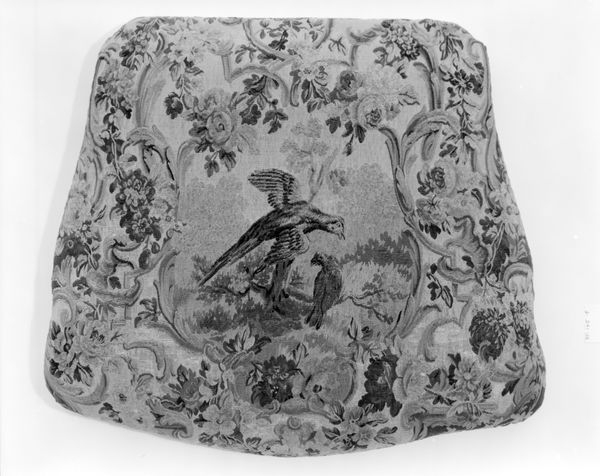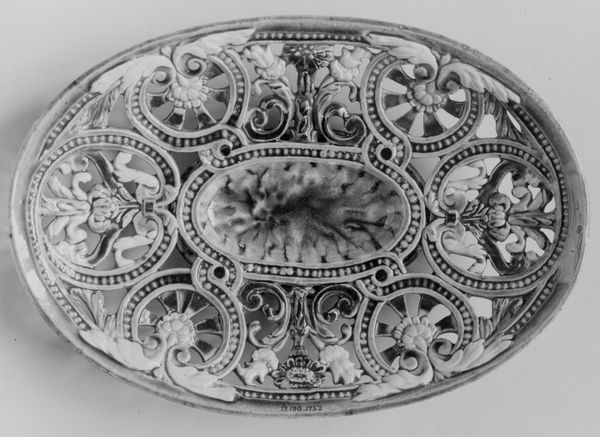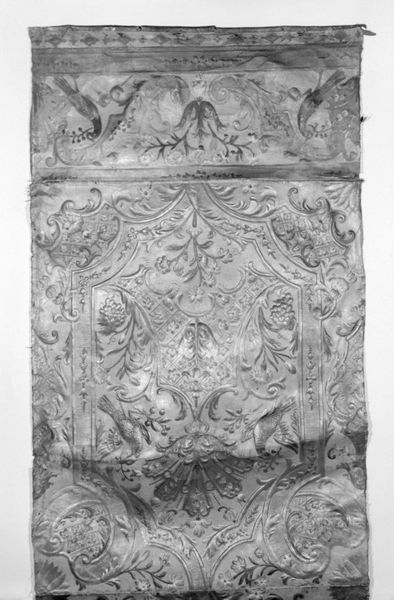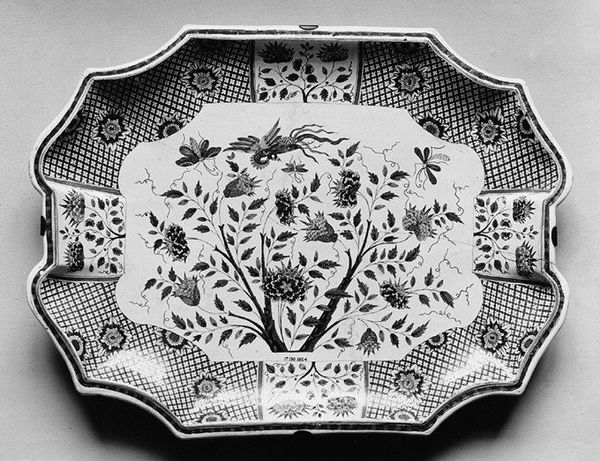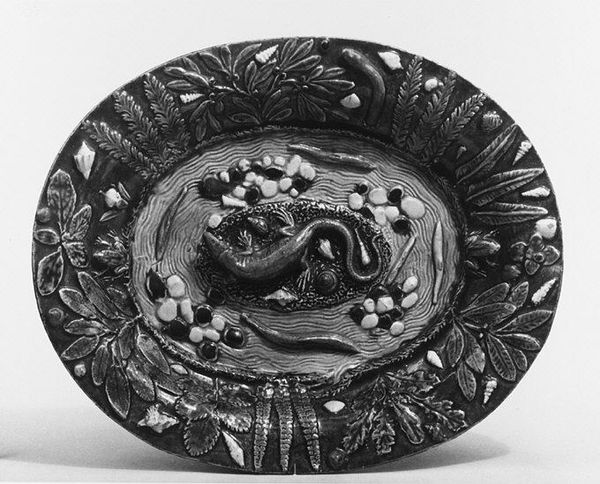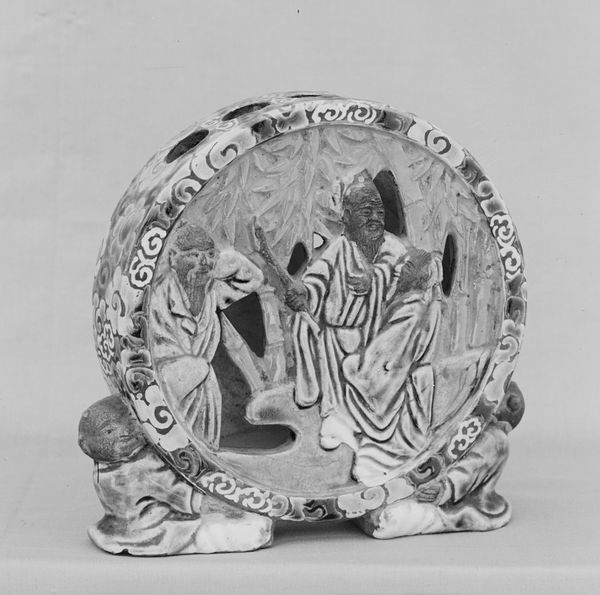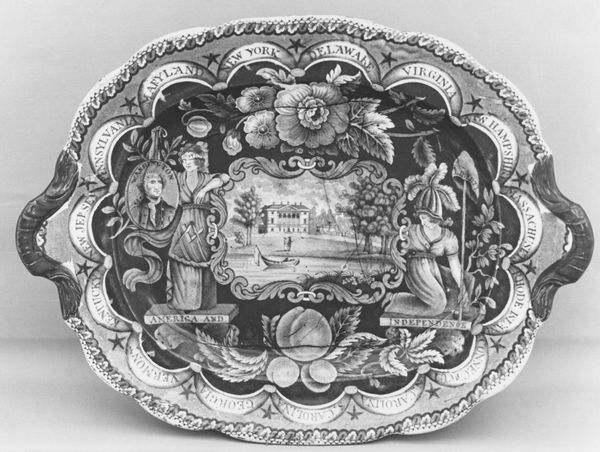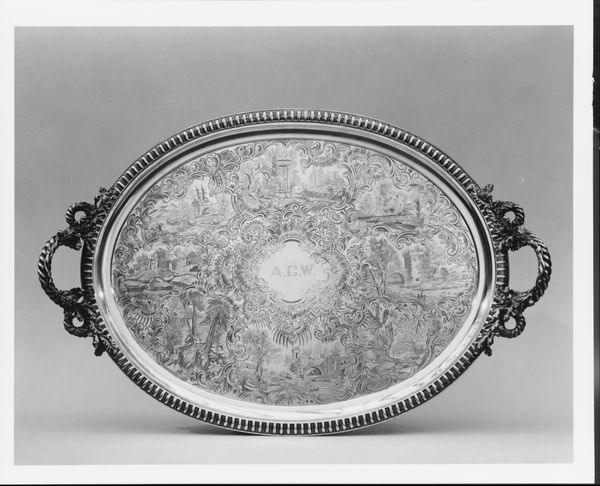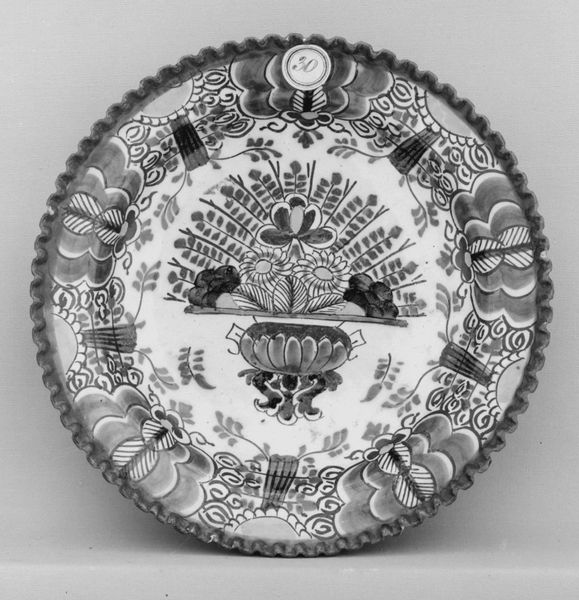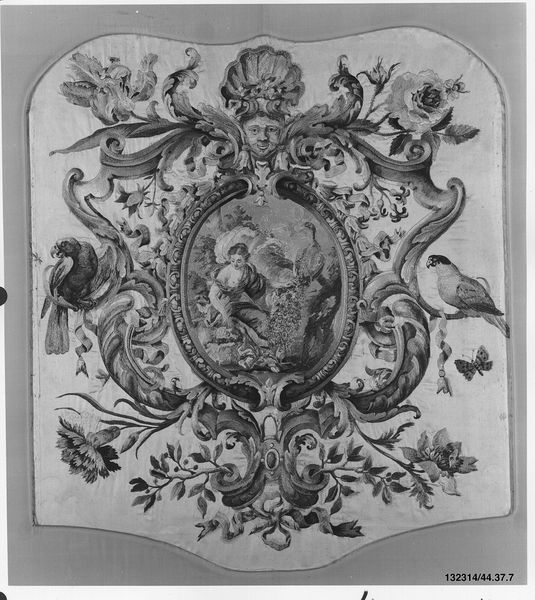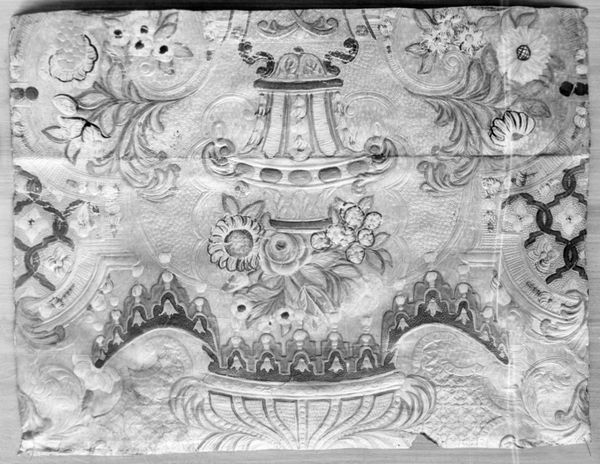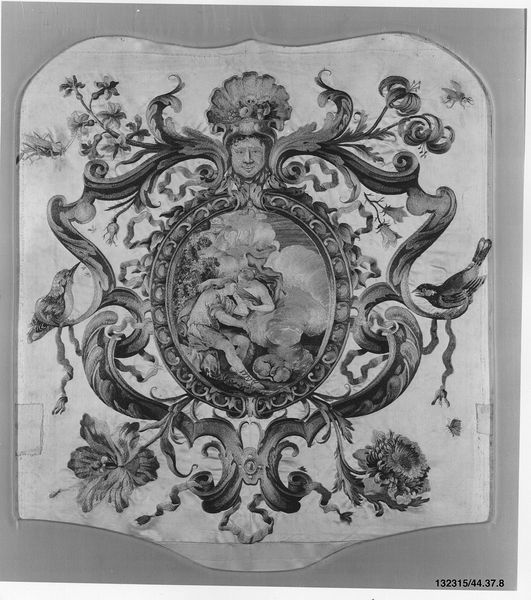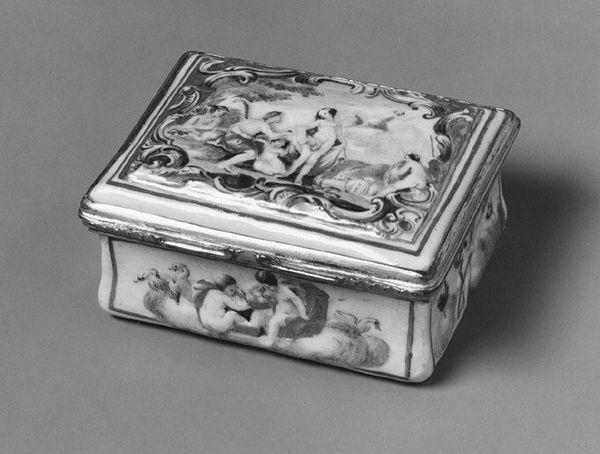
weaving, textile, sculpture
#
animal
#
sculpture
#
weaving
#
landscape
#
textile
#
sculpture
#
genre-painting
#
decorative-art
#
rococo
Dimensions: H. 34 x W. 35 in. (approx.) (86.4 x 88.9 cm)
Copyright: Public Domain
Curator: Oh, what a charming scene! It's lighter than I expected, somehow buoyant. The details of the tapestry, so meticulously rendered, soften the edges. Editor: Indeed! What we’re looking at is an armchair seat, crafted in France sometime between 1754 and 1756. It was made in Beauvais and now resides here at the Metropolitan Museum of Art. Curator: Beauvais, naturally! One expects this sort of Rococo delight from them. Tell me more about what’s depicted; my eyes are immediately drawn to those rather engaging rabbits at the center. Editor: Ah yes, the rabbits. In the center, nestled within what looks like a small pastoral scene, are a pair of bunnies, while the perimeter boasts a riot of meticulously woven flowers. We can’t ignore the wider social context: imagine the seat, likely part of a larger suite, residing in some aristocratic salon, broadcasting messages of pastoral leisure and refinement. It projects a vision of cultivated nature, deliberately distancing itself from the realities of rural life for the elite. Curator: And isn’t that central tension so characteristic of the Rococo period? These charming symbols also point toward deeper resonances, of fertility, perhaps, or innocence. The decorative border feels almost protective, nurturing the central vignette, elevating the entire composition beyond mere utility. The bunnies are emblems, visual shorthands, reminding us of a perhaps longed-for simplicity, safely domesticated. Editor: It's the artifice that always captivates me, and yet the weavers masterfully use naturalism, but with distinct commercial considerations, a piece like this reinforced social standing, solidifying class and expressing access. Curator: Quite, and looking beyond the material, it embodies the cultural dynamics of its time, inviting contemplation on leisure, wealth, and visual narrative within domestic spaces. It also demonstrates artistic prowess with wool and silk. Editor: Agreed. Ultimately, its symbolism and purpose have shaped an intricate visual language that speaks volumes about art, social structure and human aspiration across time. Curator: Indeed! An era perfectly captured in the small frame of a seat.
Comments
No comments
Be the first to comment and join the conversation on the ultimate creative platform.

